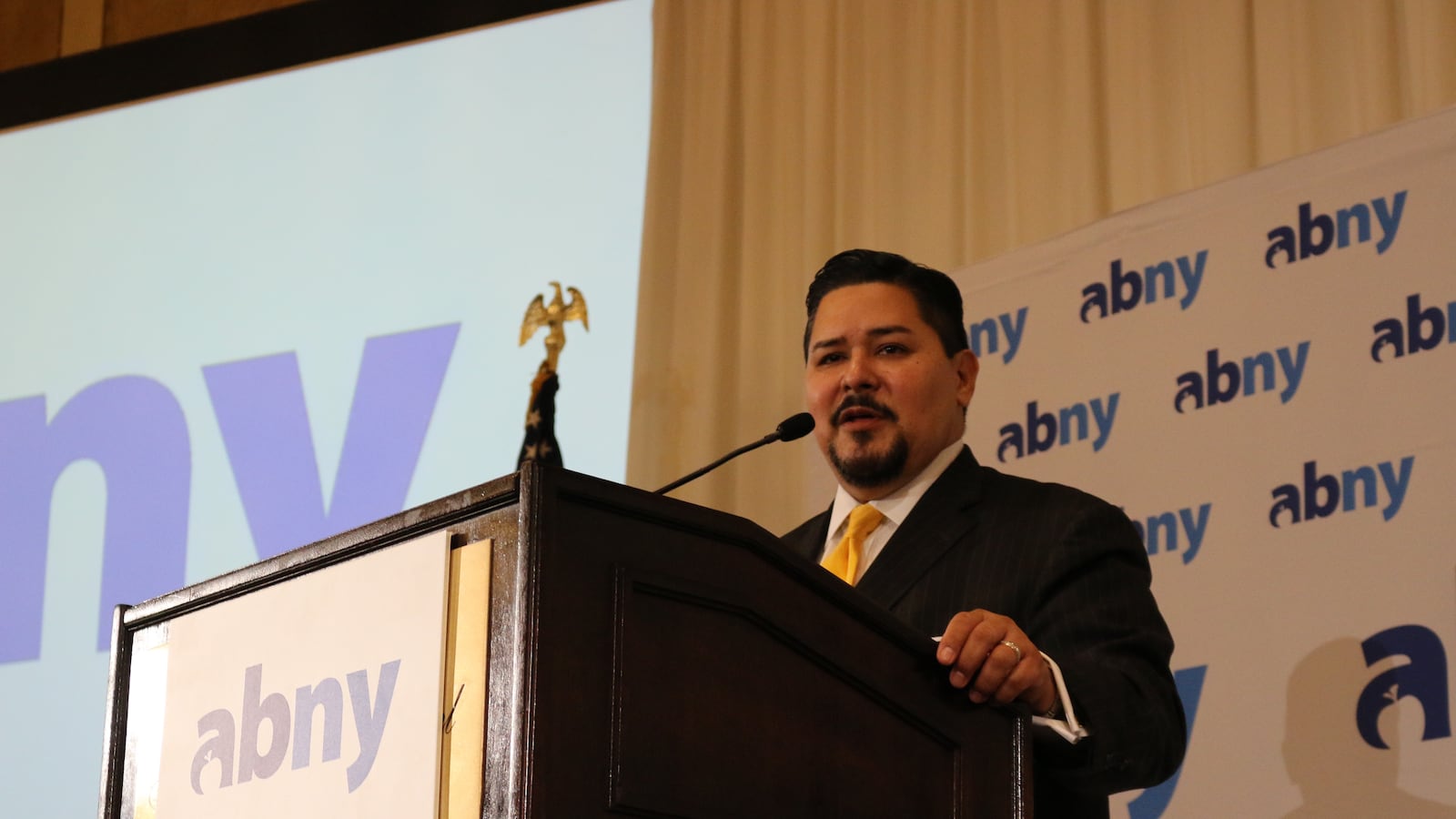New York City is revamping the way it supports homeless students, with 100 new coordinators inside schools with a high percentage of children who lack stable housing, additional training opportunities for educators, and managers who will take on a regional role in overseeing services.
The education department on Thursday said the changes will cost $12 million, bringing the city’s investment up to $28 million for homeless students. Chancellor Richard Carranza announced the hiring of new coordinators earlier this week.
The number of homeless students in the city reached an all-time high of 114,000 last spring. The figure includes anyone who has experienced housing instability and sought out temporary housing over the course of a year. Temporary housing takes many forms: families doubling up with relatives or friends, living in hotel or motels or in one of the city’s housing shelters. Of the 105,000 students that the education department counted as homeless last year, roughly 15,000 were living in a city shelter on any given night.
The upheavals that students living in temporary housing experience can cause them to miss class or change schools often and expose them to high levels of stress that in turn have a deleterious effect on their academic progress. Schools where rates of student transiency are high also suffer.
“It is a key priority to invest in – and serve – our students and families in temporary housing,” Carranza said in an emailed statement. “When our systems and structures are clearly aligned and we give schools the capacity to effectively support their students, we see the greatest outcomes.”
The city says the coordinators will play a similar role as Community School directors, nonprofit leaders who work alongside principals to oversee and manage social services inside schools. Teachers, shelter employees, and the new coordinators will all get training on how to work with children who have suffered through trauma, and learn how to use data and work together to align resources for this vulnerable student population.
Meanwhile, the city’s “content experts” will now serve a regional role, overseeing social workers, shelter employees and the new coordinators. They are expected to monitor attendance and suspension data to respond to specific students’ needs. The city plans to hire more regional managers this year, though officials did not say how many.
Since coming on board less than a year ago, Carranza has focused on reorganizing the vast bureaucracy of the country’s largest school system to better meet the needs of schools, principals, and teachers — and the announcement is another example of his leadership style. But this management approach has often come with few details. Education department officials offered few specifics about where the additional resources will be directed or the thinking that might guide such decisions.
While advocates have applauded the city for dedicating more resources for homeless students, they are waiting to see whether the new coordinators will be able to get children the emotional and mental help they need, and have enough supervision and support for their work. The city has hired about 70 social workers to support homeless students through an initiative called Bridging the Gap, but advocates have called for 150 such positions to be filled.
Funding for Bridging the Gap will expire at the end of the year, setting off what has become an annual fight with Mayor Bill de Blasio to create a permanent line for the positions in the city budget.
“Social workers offer critical counseling, social emotional support, and cross-system advocacy that homeless students and families so desperately need,” Jennifer March is the Executive Director of Citizens’ Committee for Children of New York, wrote in an emailed statement.

